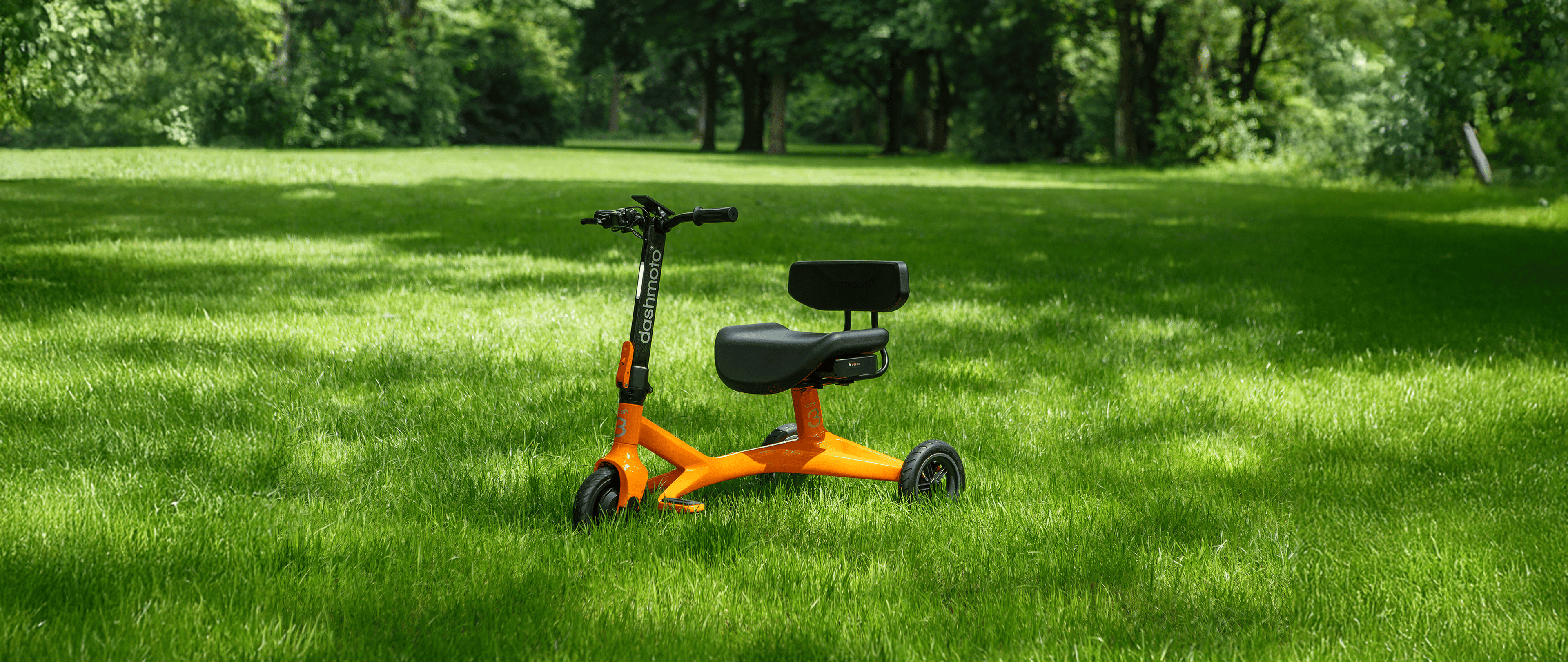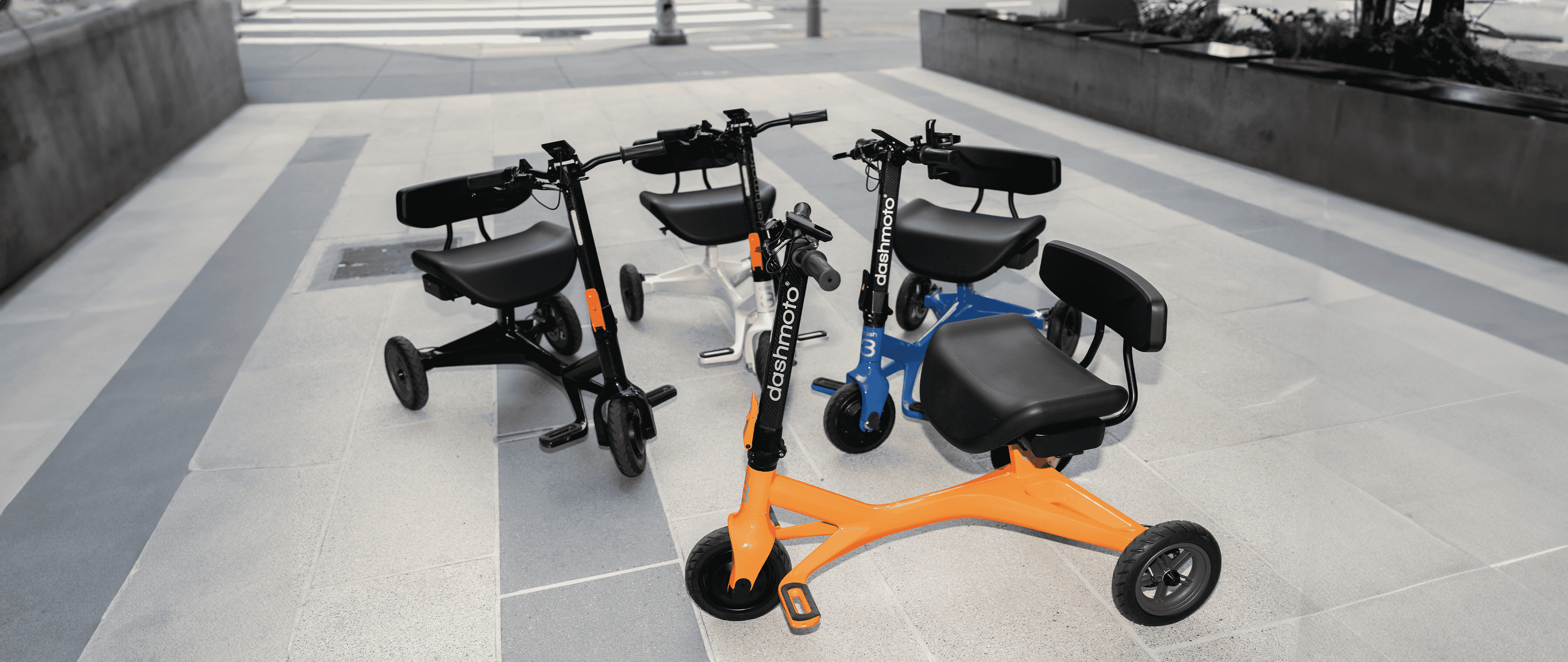The Environmental Impact of Electric Scooters – Stats You Should Know

Electric scooters are often promoted as green alternatives to cars, but what does the data say? Understanding the full environmental impact requires examining emissions, manufacturing, and usage patterns.
This article presents key statistics and insights into the sustainability of e-scooters, and how the dash 3 is designed to lead the charge.
Emissions and energy efficiency
Before an e-scooter ever hits the road, its biggest promise is cleaner, more efficient mobility. But not all scooters are built the same. The environmental return depends on real numbers, and real-world design.
Why the dash 3 beats car travel every time
On average, electric scooters emit approximately 27 grams of CO₂ per kilometer traveled, considering the full lifecycle including manufacturing and electricity generation. In contrast, a typical gasoline-powered car emits about 400 grams of CO₂ per mile, or roughly 250 grams per kilometer. This significant difference highlights the potential of e-scooters to reduce greenhouse gas emissions when replacing car trips.
With the dash 3, this efficiency is multiplied. Its lightweight carbon fiber frame and high-torque motor allow it to deliver top-tier range without draining excessive power. It uses energy smarter, less battery draw per mile means fewer charges and more miles on the same wattage. It's the kind of math that makes a difference at scale.
Getting more from every watt
Think of energy efficiency like mileage, but electric. Electric cars might seem eco-friendly, but many require heavy power draws to move larger bodies and batteries. A compact e-scooter like the dash 3 can travel up to 20 times farther on the same energy input.
This is where portability meets purpose. The dash 3 isn't just convenient, it's precise. Every detail, from the regenerative braking to the streamlined body, is tuned to maximize output and minimize waste. It's the kind of smart engineering that makes efficiency feel effortless.
Manufacturing and material considerations
The environmental story doesn't start when a scooter hits the street, it begins in the factory. The choice of materials, how those materials are processed, and the design philosophy all shape a product's carbon footprint.
Moving away from aluminum for good reason
Most electric scooters rely on aluminum for their frame, but aluminum production is one of the most carbon-heavy processes in industrial manufacturing. Producing one tonne of aluminum emits approximately 16 tonnes of CO₂, making it one of the most carbon-intensive materials used in manufacturing.
By contrast, the dash 3 uses a carbon fiber frame, a premium material known not only for its incredible strength-to-weight ratio, but also for its reduced emissions footprint in small-batch, high-efficiency production. This isn't about aesthetics. It's about engineering sustainability into the very bones of the product.
Lighter, stronger, smarter
Carbon fiber offers more than just emission savings. It makes the dash 3 significantly lighter than most scooters in its class, which has a ripple effect across the entire product experience. Less weight means less energy needed to accelerate, less battery strain, and easier handling for everyday use. It also contributes to the dash 3's long lifespan, resisting wear, corrosion, and stress over time.
This is how the dash 3 sets a new bar, not just in ride feel, but in the entire lifecycle of sustainable transportation.

Battery lifecycle and recycling
The battery is the heart of any e-scooter, and like any heart, its strength and longevity determine how far you'll go, and how sustainably you'll get there.
Lithium-ion batteries go the distance
Compared to lead-acid batteries, lithium-ion batteries offer a longer lifespan and higher energy density. That means fewer replacements, less waste, and better performance across the board.
They can hold more charge for longer, which keeps you moving and reduces environmental strain over time.
The power of recycling
Even when a battery reaches the end of its usable life, it doesn't have to end up in a landfill.
Today, the global recycling rate for lithium-ion batteries is estimated to be around 5%. While this is relatively low, efforts are underway to improve recycling technologies and infrastructure to increase this rate.
The dash 3 is built with this future in mind. It uses a premium battery pack designed to retain performance over hundreds of cycles, and its modular design makes end-of-life servicing or battery replacement easier and cleaner.
Sustainable mobility doesn't end when the ride does, it considers what happens after, too.
Usage patterns and real-world impact
The true environmental impact of electric scooters depends a lot on how they're used, how long they last, and what they replace.
Built to replace the car, not just the walk
Not all e-scooter trips replace car trips. Some replace walking, biking, or even public transport. The dash 3 is different. It's fast, powerful, and designed for real daily travel. That makes it far more likely to take the place of car rides, where the environmental payoff is biggest.
When you factor in scenarios where e-scooters are used to replace car commutes, energy consumption can be reduced across urban areas.
Durability means long-term savings—for you and the planet
Many scooters are cheap and disposable by design. They wear out quickly, break easily, and wind up being replaced rather than repaired. That short product life cycle eats away at any environmental advantage.
The dash 3 is built to last. With high-grade materials, water-resistant seals, and a reinforced folding mechanism, it's designed for longevity, not landfill. That means fewer replacements, fewer resources used, and a more sustainable choice for everyday mobility.
Electric scooters offer significant environmental benefits when they're used wisely, built right, and made to replace higher-emission travel.
The dash 3 stands apart because it's engineered around all three of those goals. From its carbon fiber construction to its high-efficiency powertrain, it delivers not just performance, but purpose. It doesn't just get you there. It helps protect the world you're riding through.
As infrastructure improves and urban planning shifts toward cleaner mobility, products like the dash 3 will be central to a smarter, greener future. It's more than a scooter. It's a solution.
Discover how dashmoto® is committed to sustainable mobility. Pick up one for yourself today to experience the eco-friendly benefits that come with owning a dash 3.
Related posts

Driving Eco-Friendly Mobility Solutions With dashmoto® Scooters
Discover eco-friendly mobility solutions that prioritize sustainability and innovation. Drive towards a greener future with our cutting-edge dash 3 electronic scooter.
Advanced Engineering Meets Convenience with dashmoto® Scooters
Discover the dashmoto® electric mobility scooter—lightweight, portable, and designed for comfort, freedom, and adventure in urban and everyday environments. dashmoto® products are intended for general lifestyle use and are not medical devices; use responsibly and at your own risk.
dashmoto® products are intended for general lifestyle use and are not medical devices; use responsibly and at your own risk.